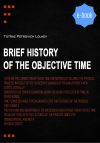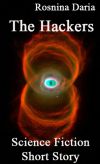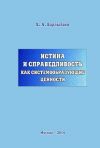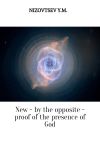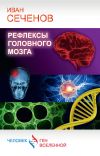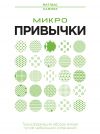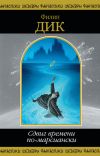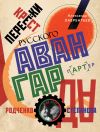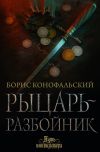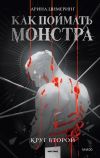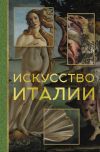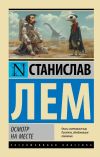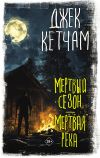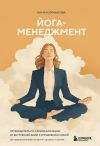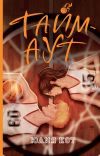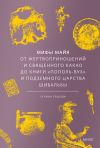Текст книги "Everything and nothingness"
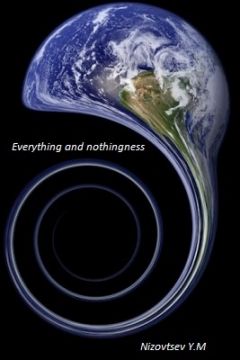
Автор книги: Юрий Низовцев
Жанр: Философия, Наука и Образование
Возрастные ограничения: +12
сообщить о неприемлемом содержимом
Текущая страница: 3 (всего у книги 12 страниц) [доступный отрывок для чтения: 3 страниц]
However, Avenarius and Mach in his approach to the ratio of sensations and things in some respects moved further Berkeley and Husserl and further the materialists, having presented certain evidence of its concept, in which consciousness becomes attached to things, and vice versa, things do not exist outside consciousness.
At this materialist arguments in the face of Lenin, as you can see, often look unconvincing, though sensation, thought really “… is the supreme product of matter organized in a particular way” [1, chapter 1.2], which Lenin, however, did not give any interpretation.
Lenin was right, that “.... sensation is indeed the direct connection between consciousness and the external world” [1, chapter 1.1]; but in the opposite sense, because the outside world as a holographic projection Uniform is formed directly by the single consciousness; besides, sense organs of each conscious being (the live) are connected with Uniform, on the basis of which the single consciousness is copying every "moment" things for updating of former copies of things from Uniform by means of their identification through sense organs of conscious beings and thanks to understanding by the single consciousness of forms of these things.
Whatever it was, Avenarius and Mach are right in the respect that without consciousness there is no matter and vice versa, though here they exhibit significant fluctuations, then reducing matter to sensations, then claiming that matter as some substance still exists.
In particular, Mach reduces matter to sensations, indicating on this in the following fragment: “Sensations are not “symbols of things”. The “thing” is rather a mental symbol for a complex of sensations of relative stability. Not things (bodies) but colours, sounds, pressures, spaces, times (what we usually call sensations) are the real elements of the world” [15, p. 473].
At the same time Avenarius believes that each person is a sensing substance, i.e. he recognizes existence along with sensations (consciousness) of some matter though accurately doesn't share them: "So as … neither the experience nor the right conclusions from it do not give the right to consider sensations as a result of motion, it is appropriate to recognize sensations as a property of the respective substance and therefore to allow the existence of sentient substances. At this is especially valuable for us the fact that we know ourselves as the sensing substance and in our inner experience sensation is given with more certainty than is substantiality" [3, §91].
But not everything is exactly as believe Mach and Avenarius because on the basis presented by them it is impossible to draw conclusion on absence in general for the person of the objective reality, more precisely, to draw a conclusion on lack of things, which are independent of consciousness, for the following reasons.
In infinite and eternal Uniform consciousness (the active) and things (the passive) are merged together, and in a different way out of time can't be, and it isn't necessary to speak here about dependence or independence of things from consciousness.
But timeless Uniform as the infinite which remains invariable, is manifested through own holographic projection which exists in time, and three-dimensional measurement as a derivative from it the person can observe. And this changeable reality round the person is quite independent of him so how he isn't capable to change motion of stars and even weather on Earth.
Therefore, Avenarius and Mach are wrong in their denial of the existence of objective reality for the human, or more precisely, – denial of independently existing from human things, essentially bearing in mind only something with which one is confronted in its activity, pointing to the inseparability of subject and object in the experiment.
But even in this field things and the person are clearly separated from each other, although Avenarius believes otherwise: "… two component parts are inseparably fused in a primitive experience: first, what by its content is given indeed through the subject; secondly, what one who cognizes, perhaps, himself has introduced into the subject of experience"[3, §49].
However in this reality accurately works the practice as criterion of truth. So, Avenarius's statement is disproved then, that if in the same experiment it would be impossible to determine that is given through a thing and that is introduced by the person-experimenter, then results of experiment from the practical point of view would be senseless. But this is not so: the experiments are carried out only to find sense in things and use it for extending the boundaries of the cognitive process, and for practical purposes, in particular for improving human life. So that, distinction between the person and a thing in experiment completely doesn't disappear, despite their interaction, judging by practice in the sphere of human activity.
Nevertheless, in a number of physical and chemical experiments it isn't possible to receive data, "pure" from the experimenter's exercises on object of research and they have to be conjectured and/or experimental conditions have to be changed, but completely to make experience by "the pure", as Avenarius believed: "Scientific experience differs from naive experience the fact that it really separates this experience from what it introduces and thinks together with the data in the experience" [3, §49], is impossible.
Whatever it was, but Avenarius and Mach noticed really existing relationship between the person, but in fact his consciousness, and the thing, inasmuch how a holographic projection of Uniform so and the environment of each individual consciousness, or his "now" are formed by single consciousness through individual consciousnesses of countless living beings and their sense organs. Holographic projection is fully being formed, more precisely, updated discretely by the single consciousness which is the set of all individual consciousnesses, and "now" of each individual consciousness is formed by it through sensations of own carrier (the body) with the hidden support of the single consciousness on the basis of Uniform.
In that respect really there is no things without consciousness and – consciousness without things, inasmuch things themselves are hidden in timeless Uniform and consciousness updates only what is in its disposal in a holographic projection through identified by him copies of things (the passive) from Uniform.
Therefore things in this process of updating of a holographic projection are connected with consciousness, time it forms on their basis, more precisely, on the basis of the passive from Uniform, copies of things and updates by them the previous copies in a holographic projection, but not indissolubly, inasmuch every "moment" of the update makes a certain duration behind which through a pause there comes the following updating. These "gaps" make time in which the infinite is manifested as finite infinitely. Otherwise information on things for consciousness would remain hidden in Uniform, or Uniform wouldn't be manifested in the projection that means a non-existence for it, but we don't observe this, so how the changing world is open to us.
Thus, it is possible to state: without consciousness there is no matter, and without matter there is no consciousness, but it doesn't mean their sameness – one is the active, another is the passive, but they are merged completely only in Uniform as the infinite and timeless; and in a holographic projection they exist as the finite infinitely, but discretely, or in time. Thereby they have an opportunity to be divided in each process of updating of a projection.
In this temporary process before each individual consciousness through sensations of its carrier arises possible separately to investigate things getting to their essence and along with that – to live among things in beingness which is arisen as a result.
For clarification note that it is pointless to state unequivocally the following:
– matter (things) exist irrespective of consciousness, and the consciousness is a product of self-development of matter (Marx, Lenin);
– matter depends on consciousness, for example, matter, Universe are created by God out of nothing (Christianity);
– matter and consciousness coincides, for example, matter and sensations are one and the same (Avenarius, Max);
– consciousness, or spirit exist only as one-only, doing that he believes, or self-developing, according to Hegel; Berkeley also considered that matter, as such, is absent, but there is only a disembodied spirit.
In a holographic projection all things – material, frequency formations – are formed by consciousness in the form of copies from Uniform and therefore depend on it and on consciousness, i.e. they are formed by consciousness on a basis of the infinite and timeless Uniform which can't directly be present in the finite formations of a infinite holographic projection which thereby are in this projection in time, and in this regard, things, as the passive and merged in Uniform, don't depend on consciousness and remain in timeless Uniform in the same "dissolved state". The only way they can stay there – out of time conjointly, including and consciousness itself.
Thus, information copies of things from Uniform for continuous updating of a holographic projection are formed by consciousness, but don't arise in itself so how to identify in Uniform things on the basis of the previous copies and own form-building abilities,, thanks to what consciousness "chooses" from Uniform some other form of a thing and copies it, updating thereby the previous copy, can only consciousness having access through sense organs of the carriers into Uniform in one form or another. Therefore in this relation, things, more precisely, their copies in the projection of Uniform, depend on consciousness which forms them, but nevertheless without the passive from Uniform consciousness is incapable to form the corresponding copies.
In this model isn't present not only any self-development of matter, but it also isn't required inasmuch consciousness and things in copies don't arise in a holographic projection, but exist as polytypic material formations discretely in infinity of updating which is "produced" by the single consciousness.
If to proceed from the position presented by us, matter can't depend completely on consciousness, for example, it cannot "produced" from nothing by spirit or God, first, because in timeless Uniform consciousness coincides with things (the passive) so how in this type of infinity there are no changes and everything is merged together, representing potentially everything and along with that – nothingness; secondly, in a holographic projection of Uniform matter (things in copies, or the passive) is separated from consciousness (particles-copies of the single consciousness, or the active), making thereby the certain base for development of consciousness, that in the form of environment provides the opposition to consciousness which is necessary for its development.
Thereby consciousness in the temporary twin of Uniform – the holographic projection – doesn't coincide with things though consciousness itself also forms things in copies, by which are updated every "moment" the previous copies of things in irreversible sequence.
The very same consciousness cannot but be separated from the copies of the things around him ultimately in beingness for their own development and life among the copies of the things in the finite indefinitely, i.e. discrete,
At this, time for each individual consciousness in beingness is represented as current smoothly whereas in its basis – a holographic projection – time is irreversible sequence of durations, separated by pause.
These durations ("moments", more precisely, updating positions) exist not in itself, but are formed during information discontinuous process of identification (recognition) of things from Uniform for consecutive updating of previous copies of things in the holographic projection.
Each individual consciousness in the development and life in any of measurements of beingness is merged with the body-thing without which it can't act in the corresponding measurement of beingness due to their different characteristics (individual consciousness has no sense organs, appropriate to the particular form of matter of these or those measurements of beingness). This connection of eternal consciousness (the live) with lifeless (thing) as finite lasts temporarily – during the possible existence of this association which term is determined by environment (things inside and outside) and the action program of the consciousness in the information process connecting the living beings and things.
After exhaustion of opportunities of this coexistence the body passes from a "the live" state into the category of lifeless things not possessing ability to be reproduced, property of metabolism, ability to adapt to environment etc.; in other words, with the termination of life of a body the consciousness loses possibilities of interaction with surrounding and leaves a body.
In the course of existence the living beings without self-consciousness, or the lowest forms of consciousness form own body from the corresponding complexes of matter of this measurement on the codes which are available for it in a genome, and the highest consciousness enters in symbiosis with the living beings without self-consciousness in their most developed expression (primates).
Thus, any individual consciousness, as the active, through the corresponding pause comes into contact with new formation-body, as if vitalizing it by appropriate programs through gene codes for the following stage of growth, development and life, and so on.
It turns out that, merged in Uniform, things and consciousness at the same time in the copies exist in a holographic projection of Uniform not without "intervention" of consciousness in separateness of each copy, without losing thus unity in a holographic projection owing to its main property, as holograms, as well as getting unity in time of coexistence of the individual consciousness and a body.
Consciousness is not the incorporeal, ideal, unique, capable self-developing in this loneliness, as, for example, thought Hegel. On the contrary, in a holographic projection consciousness exists among copies of things being updated by him in the form of a set of copies of the individual consciousnesses representing quite material frequency structures, same frequency formations as things, but higher order, and possessing in the living beings without self-consciousness only ability to self-development, but having self-consciousness in the highest expression.
Except frequency structures in the holographic projection there is nothing, and they didn't arise and didn't disappear, but existed, in our understanding, always, changing only the range and harmonics during updating. At this all of them are equal to zero integrally, being in antiphase each other.
The difference between these formations consists in what the simplest structures (the passive) are not able to change themselves on own understanding which they don't have – they are changed (updated) logically in succession only with "challenge" them, more precisely, by their consistent identification by the most complex frequency structures (the active), having the understanding, which "search" themselves in changes by them of the passive.
Thus, indirectly, through the passive, are possible changes of the most active. But for "work" of the active with the passive on change of itself it are required steady formations, which are absent in the holographic projection of Uniform.
This requirement is fulfilled due to consecutive "clutch" of updated frequency structures of the passive that is quite possible for information copies (information packages) owing to loss of pauses between positions of updating of the passive, or pauses between information packages.
Pauses drop out in each individual consciousness in own carrier (the living being) generally because of a certain duration of processing of each package of information (the threshold of perception). This delay allows as if to catch up the previous package to the new package every time, creating in individual consciousness illusion of smoothly current information of certain forms.
Thus "the clutch" can be carried out only through frequency structures of the active linking in itself the frequency structures of the passive in irreversible sequence of identification. It means transformation of the arriving information out of the motionless, but consistently replaced formations, into the moving world – as analog up to some extent can serve demonstration of the movie for the audience with that difference that the movie "is scrolled" inside of the active and it makes the active itself.
In other words this idea can be expressed so.
Fluctuations of one sign in the form of separate packages of information (impulses),which are arriving consistently in the processing centers of the living being, are being merged in them in holistic material, being transformed to the picture not frequency type, but, for example, into the picture known to us the world of things and the phenomena. On the one hand, this picture has an information-frequency material basis, on the other hand, the picture of the world represents, like a computer game, an artificial steady formation with own regularities, rules and establishments which can differ for various measurements, but for which always are typical current time, motion of the specific things in a certain space.
Any living creature that is in the current life "inside" of this world, naturally, perceives it objectively, i.e. it isn't capable anything to change in the world, it cannot manage by this world, similar soldier in the computer game, but, unlike the soldier, no one has control over any living being in this world – it does everything itself, however obeying to a certain extent the fixed rules. It cannot, for example, cancel the law of conservation of energy, chemical bonds of elements, own metabolism, limitation of life of a body in the conditions of environment or condensation of time with development of all live.
For clarification, we note that there is nothing surprising in the transformation by the sense organs and processing centers of the living being of the own high-frequency base and the frequency base of things into the macrocosm, known to us, in which the living beings can exist, breed and develop, inasmuch depending on the conditions the wave material formations may manifest along with that the properties of corpuscles. This occurs in the surrounding of the living beings which form the environment, suitable for life.
Above we have answered questions, posed by Heidegger: “… (1) whether any entities which supposedly “transcend our consciousness”; (2) whether this of the “external world” can be adequately proved; (3) how far this entity, if it is Real, is to be known in its Being-in-itself; (4) what the meaning of this entity, Reality, signifies in general…” [4, p. 245-246].
These answers can be summarized so.
If the transcendental is what is inaccessible to the human empirical knowledge, then as the achievable really for the person is that appears in front of him and into him in three-dimensional measurement through his sense organs and that he is able to "split" with the help of his intellect during existence of each human civilization. Such is reality in which the person exists.
All the rest is inaccessible to the person, however thus it isn't necessary to forget that to the single consciousness, which forms all measurements of beingness, they, naturally, are available, but in the form of the representing (being) into which each individual consciousness tries to penetrate for comprehending of essence of each thing according to own level of development
This process lasts infinitely, inasmuch Uniform, as "supplier" of things, has no borders, and form-building abilities of the single consciousness are incessantly improved in beingness. Therefore the question of cognition should be put differently: whether is possible the limit to cognition of things by consciousness?
And the answer to it consists in lack of opportunity of something inaccessible to the single consciousness. inasmuch consciousness itself forms, as a result, beingness according to own understanding; but consciousness along with that uses the infinite "depth" of Uniform and variety of things from Uniform, thanks to what consciousness into own uncountable particles can infinitely develop changing itself with change of each of them.
In this respect the reality of the world can be considered as proved if not to rely only on the person who is just one of numerous representatives of consciousness in measurements of beingness, but to keep in mind consciousness, forming to itself beingness for life and development on the basis of Uniform in the finite infinitely what actually makes the meaning of this beingness.
Heidegger, contrary to Hegel, believes beingness as substantiality, which doesn't need any other entities: “Substantiality is the idea of Being to which the ontological characterization of the res extensa harks back. “Per substantium nihil aliud intelligere possumus, quam rem quae ita existit, ut nulla alia re indigeat ad existendum.” “By substance we can understand nothing else than an entity which is in such a way that it needs no other entity in order to be.” The being of a “substance” is characterized by not needing anything” [4, p. 125].
Feeling limitation of beingness constructed on thingness and not understanding from where things come as well as how things are retained in beingness, Heidegger, as well as most of thinkers up to him, comes to God: “Substantia quae nulla plane re indigeat unica tantum potest intelligi, nempe Deus (Substance, which isn't needing in any thing absolutely, can be thought only as one, namely God)… Alias vero omnes (res), non nisi ope concursus Dei existeri posse percipimus (But all other (things), we notice, can't exist differently as needing the help of God)… All entities other than God need to be “produced” in the widest sense and also to be sustained” [4, p. 125].
Thereby Heidegger believes that beingness is relatively autonomous structure which is made and sustained by God.
At the same time, believing this explanation of beingness by insufficient and banal, Heidegger comes back to the person, whose substance, in his opinion, is the existence in this reality: “Entities with Dasein's kind of Being cannot be conceived in terms of Reality and substantiality; we have expressed this by the thesis that the substance of man is existence. Yet if we have Interpreted existentiality as care and distinguished this form Reality. This does not signify that our existential analнtic as in end; we have merely allowed the intricate problems in the question of Being and its possible modes, and the question of the meaning of such modifications, to emerge more sharply: only if the understanding of Being is, do entities as entities become accessible; only if entities are of Dasein's kind of Being is the understanding of Being possible as an entity” [4, p. 255-256].
Heidegger's mistake consists that he tries to link beingness with existence of the person, whereas the person is only an intermediate form, some kind of sign, more precisely, the tool through which consciousness exists and acts, using his sense organs for realization of itself in the uncountable finite human and other lives, thereby acquiring not only the life, but also development on each stage, which is determined by itself individual consciousness.
We believe that beingness in the form of the copies of things from Uniform, merging in each individual consciousness in flow, motion, is formed by single consciousness through sense organs and processing centers of each carrier of consciousness. Thus in consciousness of the person, owing to loss a pause between positions of copying, emerges current time, space and copies of things, inasmuch themselves things are inseparable, or rather, they are merged in infinite Uniform.
Things in an information-frequency form, i.e. in the form of copies, are "allocated" consistently from Uniform, forming not a number of the forms existing together, not travelling wave, but only one form which is completely replaced with another close to previous, i.e. is updated with the interval which is required on updating, and so on.
This consistently updated frequency structure, of course, is not a thing in the true sense of the word – it is its prototype, inasmuch the passive, merged in Uniform, manages to be "allocate" in consistently changing form that means the temporal character of the projection and opportunity the further transformation of these discrete high-frequency wave changes to corpuscular, separate things.
In particular, these changing frequency formations become separate and rather steady only in consciousness of the living being, for example, person thanks to the connection in him consecutive positions (moments) of update of a holographic projection – this is the cause that things acquire motion and change in arising thereby space. If time (consciousness) disappears – there will be neither things, nor space.
Therefore Heidegger incorrectly qualifies the space: “Space is not in the subject, nor is the world in space” [4, p. 146].
A holographic projection of Uniform is the superhigh-frequency updated structure which is formed, being updated, by single consciousness in own set through sense organs of the living beings on the basis of Uniform and it is presented to each individual consciousness in own carrier in accordance with his sense organs, creating his "now".
We, as people, know only yourself and your sense organs, which present us beingness as temporal-spatial-corporeal world in motion in the three spatial dimensions. However space doesn't exist "under" this reality, presented to us, separately from time, things and living beings inasmuch living beings "produce" it on the basis of Uniform by own sense organs with the hidden help of the single consciousness.
At this, "velocity of flow" of time depends on the volume of information coming to the individual consciousness through sense organs, inasmuch own time of the person is the information process, representing itself the copying of material objects, surrounding of the person, by means of his sense organs in the form of irreversible sequence of the discrete, information-bearing durations, being merged in the human consciousness and in the consciousness of any living being into a picture of incessantly changing surrounding. And all these changes depend not on some arbitrary stream of things what is impossible for the passive, inasmuch information copies of things from Uniform are initially motionless and invariable, but these changes depend on consciousness: all things are identified and copied by consciousness in the sequence of its address to Uniform in accordance with its own form-building abilities.
With development of the living in more sophisticated and diverse beings the flow of time is accelerated, reaching the maximum values with the advent of civilization of reasonable beings, as a consequence their conscious actions. Growth of speed of emergence of new information and, accordingly, its volume leads, finally, a civilization to information collapse and disintegration. [16, chapter 5]
There are no living beings – carriers of consciousness, – there is no information process of copying also, i.e. exception of the living beings, or – consciousness out of beingness signifies impossibility of existence of beingness in any form.
Berkeley and Gusserl refused to link activity of active "substance" or in our interpretation – material multiple-united holographic copies of consciousness, with manifestation of "matter", or in our interpretation – copies of the passive from Uniform which exist, being updated consistently discretely by multiple-united consciousness in the form of material holographic formations as copies of objects from Uniform, identified by consciousness, as the sole tool of retaining of Uniform from "falling" into oblivion, which does timeless Uniform as perceived in the form of updated copies of things from Uniform, identified by consciousness in accordance with to form-building abilities of consciousness.
Result – ensuring manifestation of eternal Uniform, potentially containing everything, including consciousness, through a holographic projection to the finite, real worlds with consciousness in live, temporary beings. Duality of this timeless formation and along with that the formation, which is situated in time, is permission of an internal contradiction of Uniform, containing potentially the passive and the active.
Hegel also, understanding that the objective world couldn't be formed in itself, but, without representing "mechanism" of its formation, comes willy-nilly to the simplest explanation, namely: the objective world, i.e. "“… reality is that ideality in which he (subjective spirit) cognizes itself” [17, p. 194].
Thus Hegel, like religion, uses a vague and blank expression the "ideal", and he counterposes the ideal to the material, whereas the "ideal" does not mean anything, except that it is something incorporeal, perfect, universal, complete and abstract. All these definitions have no relation to objective reality, and about the external in relation to a givens we know nothing, and even if to assume that there exists something the perfect then it is nothingness for us, inasmuch it is out of time, i.e. it does not exist as a separate.
Mach and Avenarius have also expressed doubts about the existence of things beyond the sensations. For example, Mach has formulated this idea as follows: “Sensations are not “symbols of things”. The “thing” is rather a mental symbol for a complex of sensations of relative stability” [15, p. 473]; Avenarius has reflected this idea by the words: “… sensation is given us with more certainty than is substantiality” [3, §91].
Внимание! Это не конец книги.
Если начало книги вам понравилось, то полную версию можно приобрести у нашего партнёра - распространителя легального контента. Поддержите автора!Правообладателям!
Данное произведение размещено по согласованию с ООО "ЛитРес" (20% исходного текста). Если размещение книги нарушает чьи-либо права, то сообщите об этом.Читателям!
Оплатили, но не знаете что делать дальше?